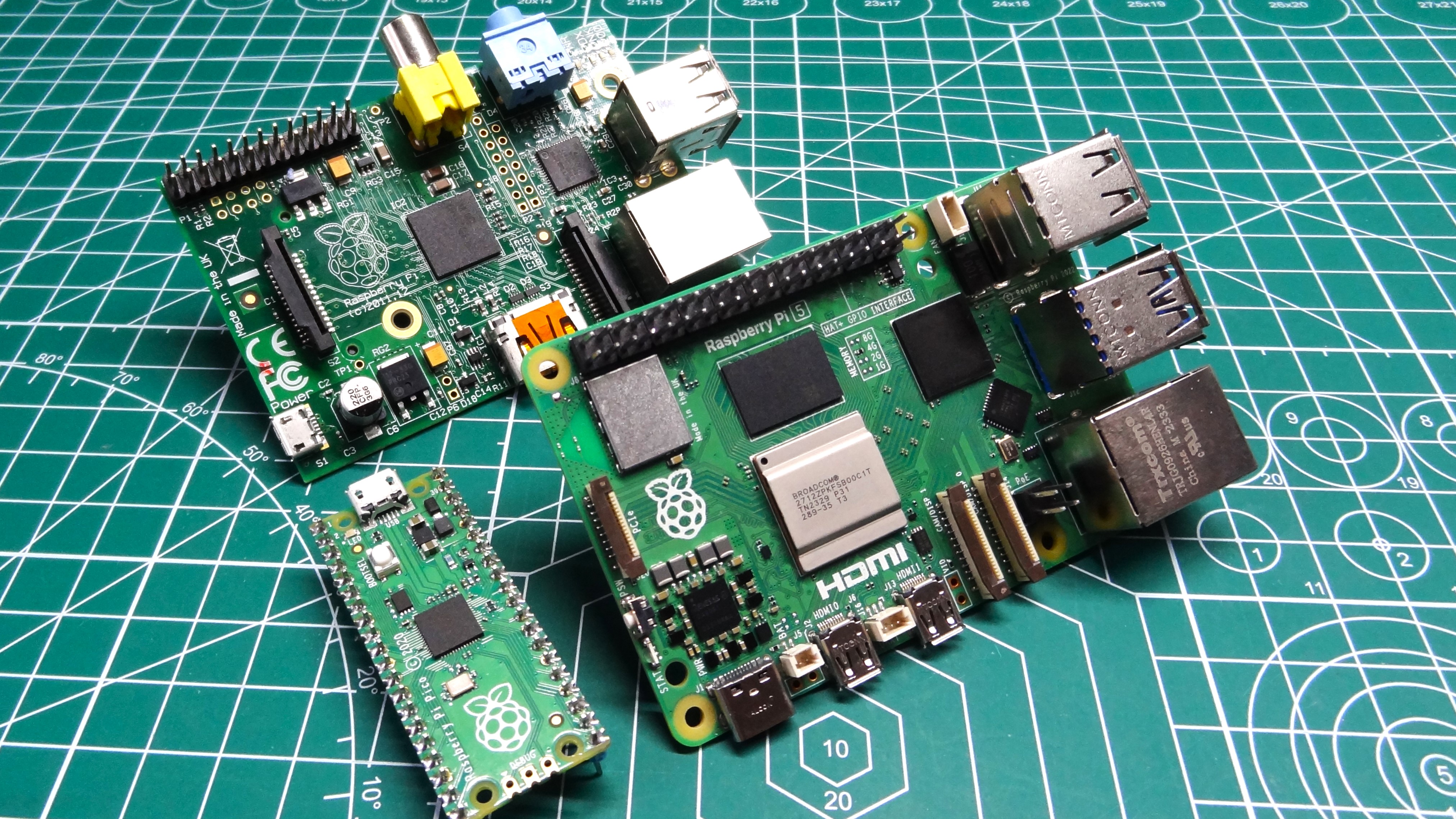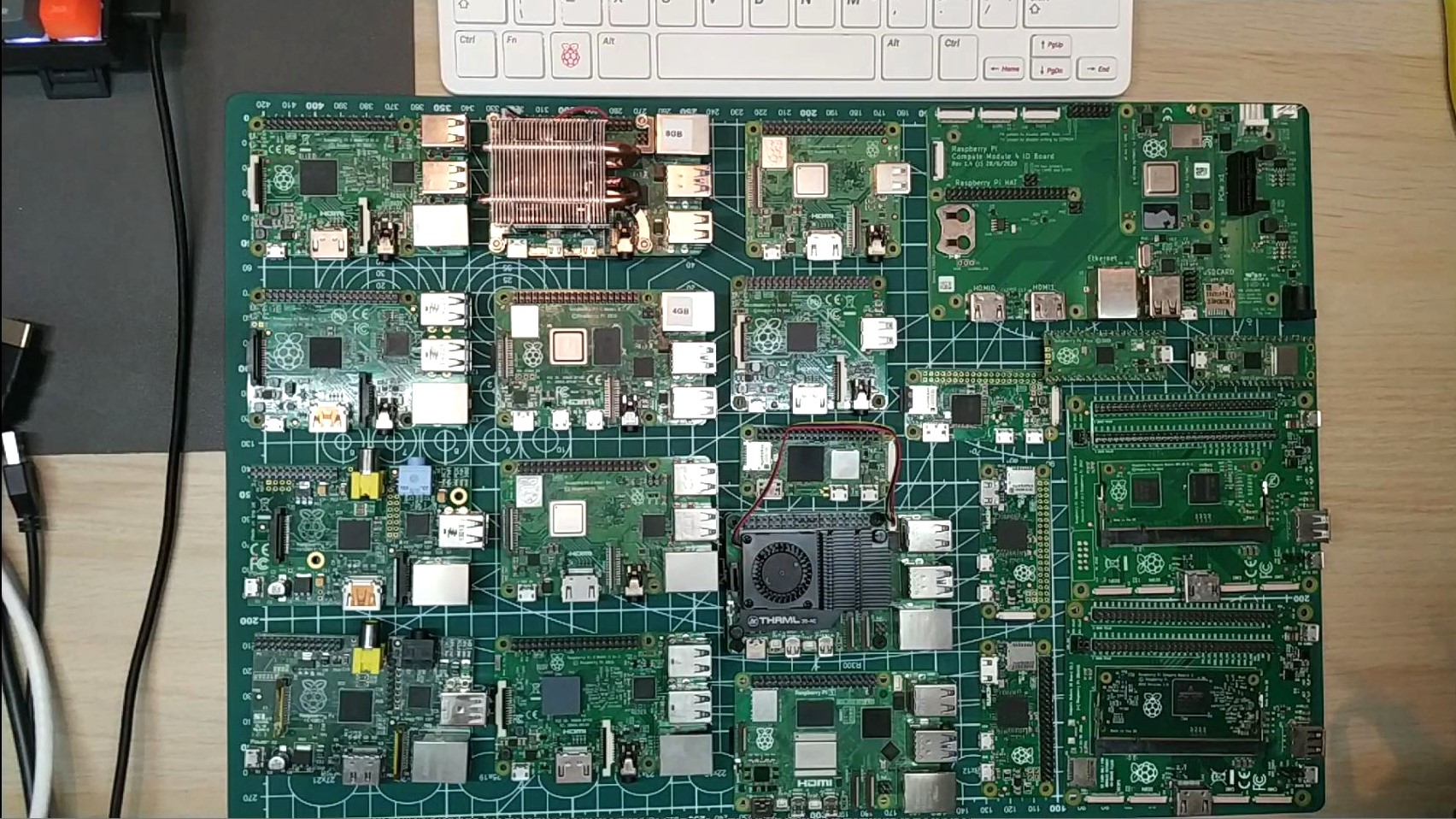Raspberry Pi celebrates 12 years as sales break 61 million units

The Raspberry Pi is 12, or three if you obey the leap year birthday rule. Launched on February 29, 2012, the original Raspberry Pi had an initial run of 10,000 boards but as demand outstripped supply, more were made. Raspberry Pi has since sold 57 million Raspberry Pi computers since launch, and four million of the Raspberry Pi Pico microcontrollers.
| Total Sales | 61 million |
| Raspberry Pi 3B / 3A+ / 3B+ | 23 million |
| Raspberry Pi Pico | 4 million |
| Other Pi models | 34 million |
We asked Raspberry Pi CEO Eben Upton for the all-time total sales data and Upton confirmed that there have been 57 million Raspberry Pis sold since February 29 2012. If we include the Raspberry Pi Pico, this number jumps to approximately 61 million.
The $4 Raspberry Pi Pico (Pico, Pico W, Pico H and Pico WH) range has sold approximately four million units. This figure does not include sales of the $1 RP2040 SoC. We've asked Upton for sales figures, but at this time all he could confirm is that "it's more than that", referring to four million Pico sales.
We're not sure how the four million is broken down, but our best guess is that the largest percentages will be for the Pico and Raspberry Pi Pico W. The Pico H and Pico WH come with a pre-soldered GPIO header. But you can just solder your own header with the best soldering irons and stations.
According to Upton, the biggest selling models were the Raspberry Pi 3 range of boards. The Raspberry Pi 3B / 3A+ and 3B+, released between 2016 and 2018 sold 23 million units, approximately 37.7% of total sales.
The Raspberry Pi 3 range of boards saw a great deal of innovation. Wi-Fi and Bluetooth were introduced. Power other Ethernet (PoE) was introduced in the 3B+, and faster Ethernet was tested ahead of the Raspberry Pi 4's release.
The Raspberry Pi 4, released in 2019, saw the longest time as flagship model, although this was largely due to a pandemic and global chip supply shortage.
The Pi 4 reigned from 2019 until late 2023, then the Raspberry Pi 5 became the flagship.
Get Tom's Hardware's best news and in-depth reviews, straight to your inbox.

According to the Guinness Book of Records, the Commodore 64, released in 1982, is the best-selling desktop computer. Selling 12.5 million units between 1982 and 1993, the Commodore 64. The 61 million units of Raspberry Pi sales are across a great deal of product SKUs, unlike the Commodore 64 which had only a few cost reducing revisions during its lifetime.
Originally released on February 29 2012, the Raspberry Pi was initially created to help university students get to grips with computer science. Initially there was just 10,000 units made for release, a number that were soon snapped up by an army of enthusiasts.
At 6am GMT on February 29 2012, I was there, eager to secure my first Raspberry Pi from one of the resellers. I had RS Components and Element 14 websites loaded into tabs, and I was refreshing to secure my place in the virtual queue. After making my purchase, it would be many weeks until I had the unit in my hands.
In a recent episode of Tom's Hardware: The Pi Cast, I dug into my museum of Raspberry Pi and presented a whistle-stop tour of all the historic and current boards that make up the Raspberry Pi Family.

Les Pounder is an associate editor at Tom's Hardware. He is a creative technologist and for seven years has created projects to educate and inspire minds both young and old. He has worked with the Raspberry Pi Foundation to write and deliver their teacher training program "Picademy".
-
thisisaname I wonder how many more they could have sold without the supply constrains they have had.Reply -
bit_user ReplyAt 6am GMT on February 29 2012, I was there, eager to secure my first Raspberry Pi from one of the resellers. I had RS Components and Element 14 websites loaded into tabs,
I bought mine like 6 or 8 months later. I'd heard they were in high demand, so I decided I'd wait. For my patience, I was rewarded with double the RAM!
What I liked most is that it shared the same foundations as my PC that ran Ubuntu, since both distros are downstream of Debian. In general, I loved the idea of having a board with the convenience and low power of an embedded computer, but the generality and software suite of a regular Linux desktop/server. -
GoofyOne I think it's a great teaching tool but maybe they should just concentrate on that, having it as a cheap SBC for teaching purposes. The Pico Pi is great also, for experimenting.Reply
There is alot of competition now. Every Tom, Dick, and Jane is coming up with 'this is better than the Raspberry Pi' products and maybe they need to rethink how they (those that design the Pi) want to move forward. These days you can get quite cheap secondhand laptops, and mini pc's and such.
Maybe just a board that plugs into a standard USB2/3 port, and has a Raspberry Pi GPIO, that can use most of the same HATs and such, that sort of thing might be a good training/learning tool.